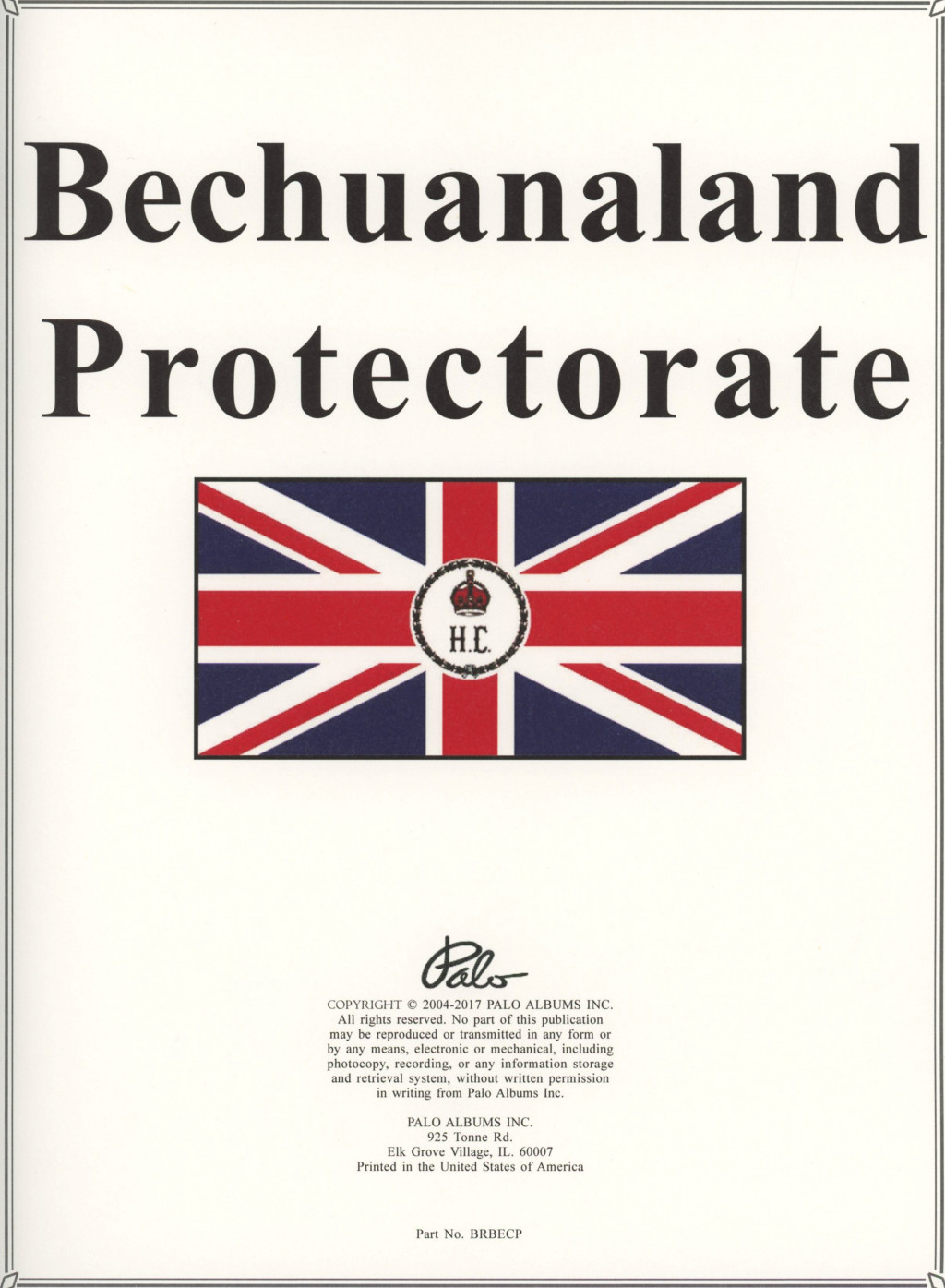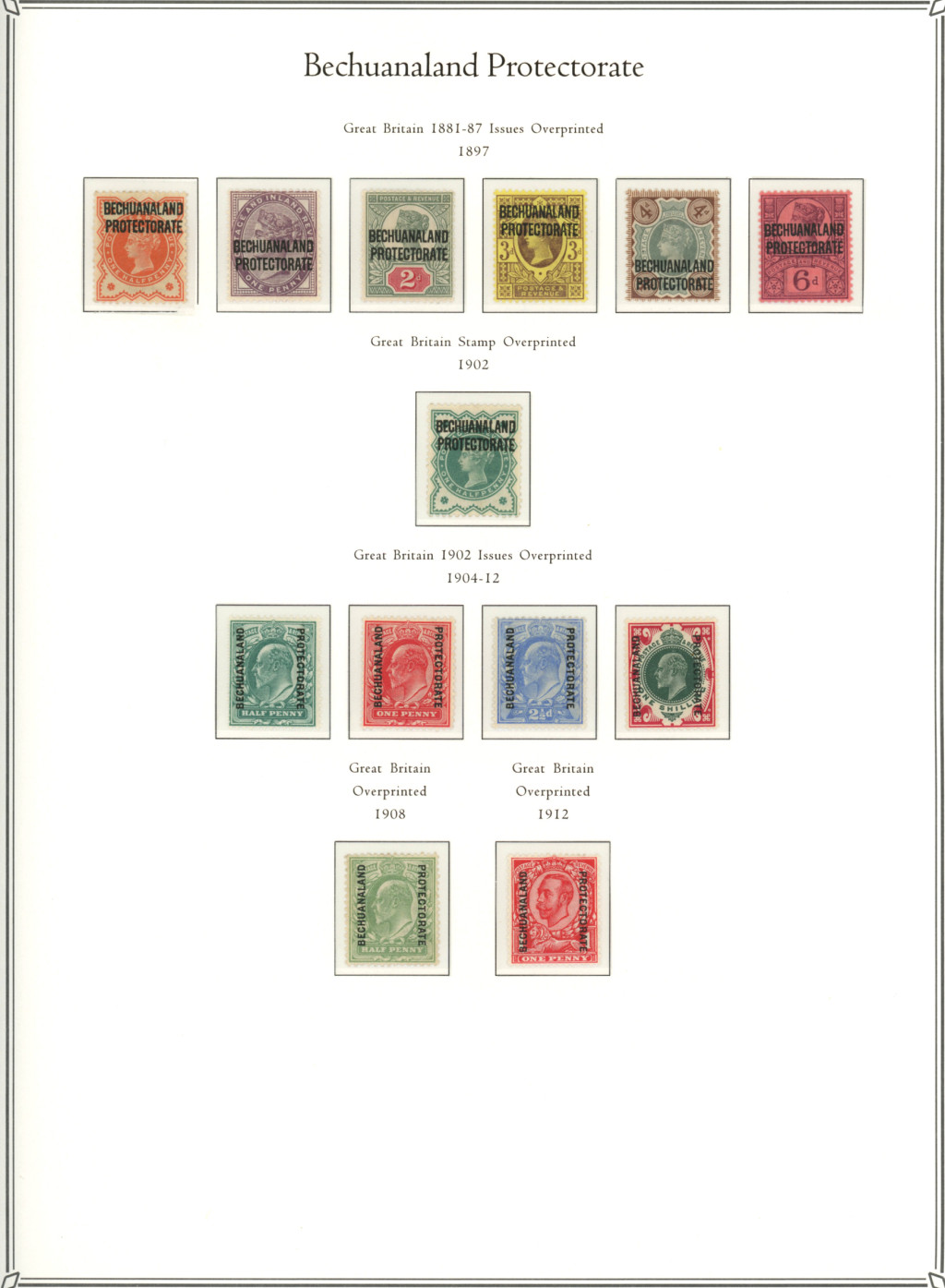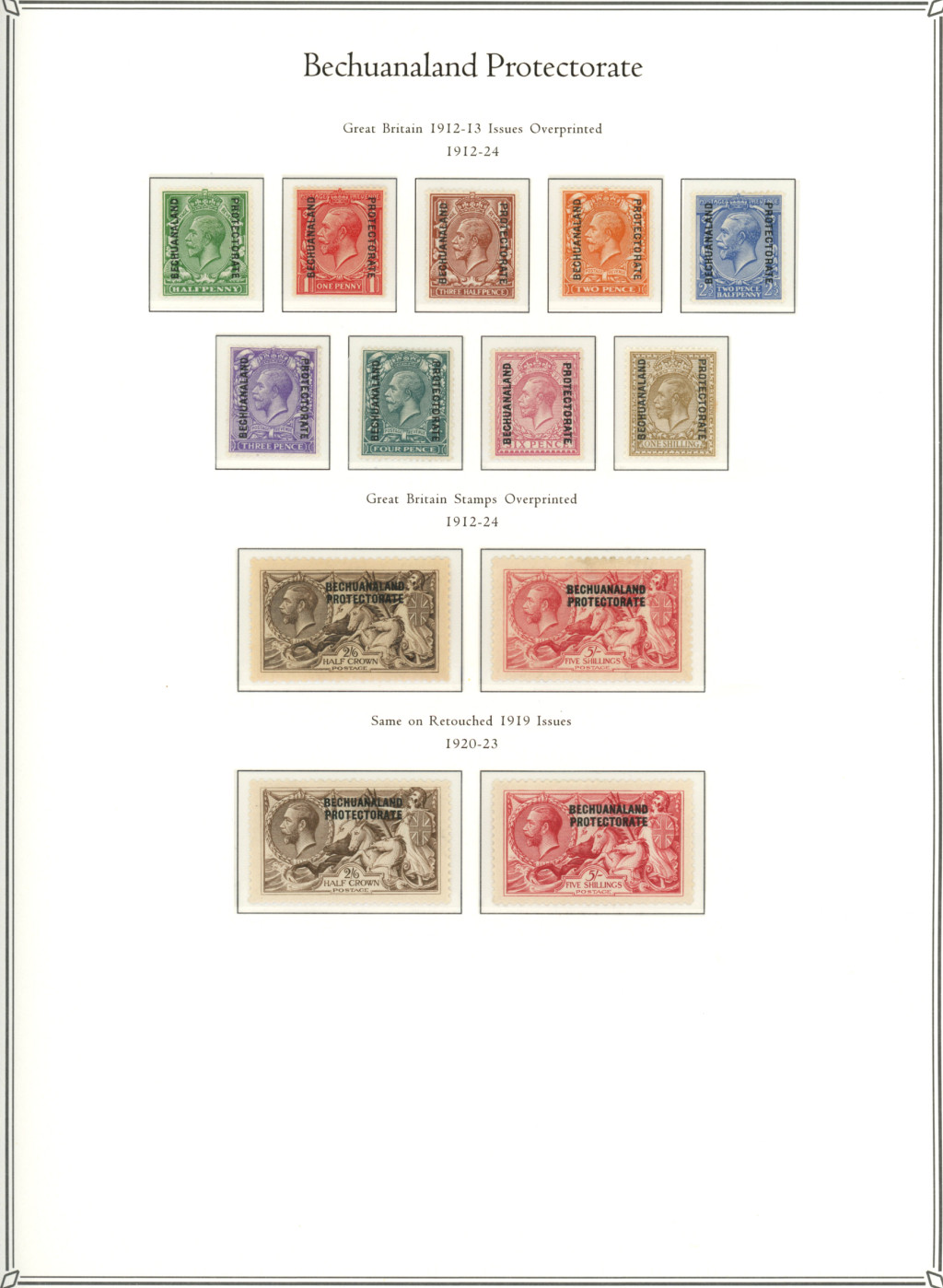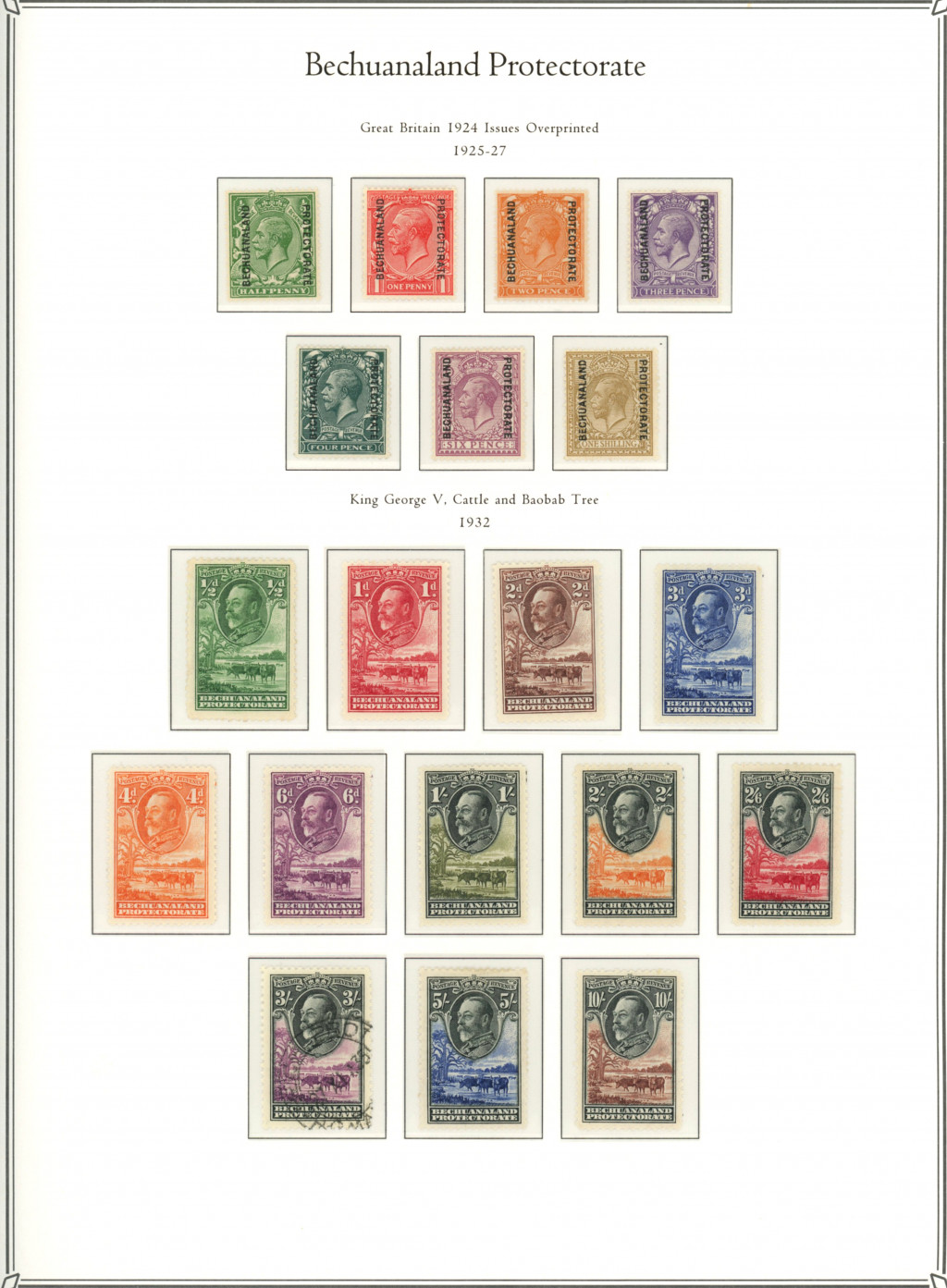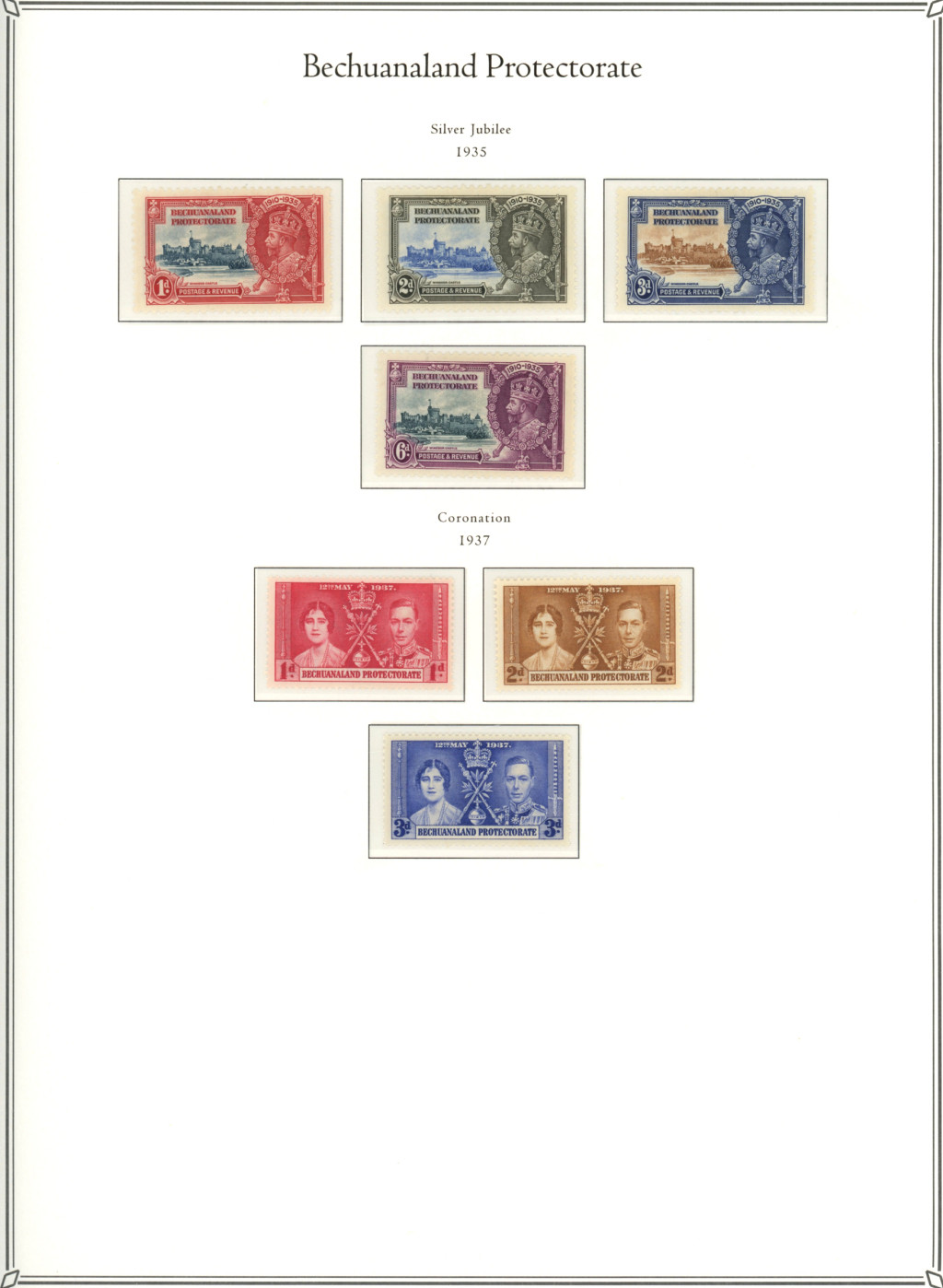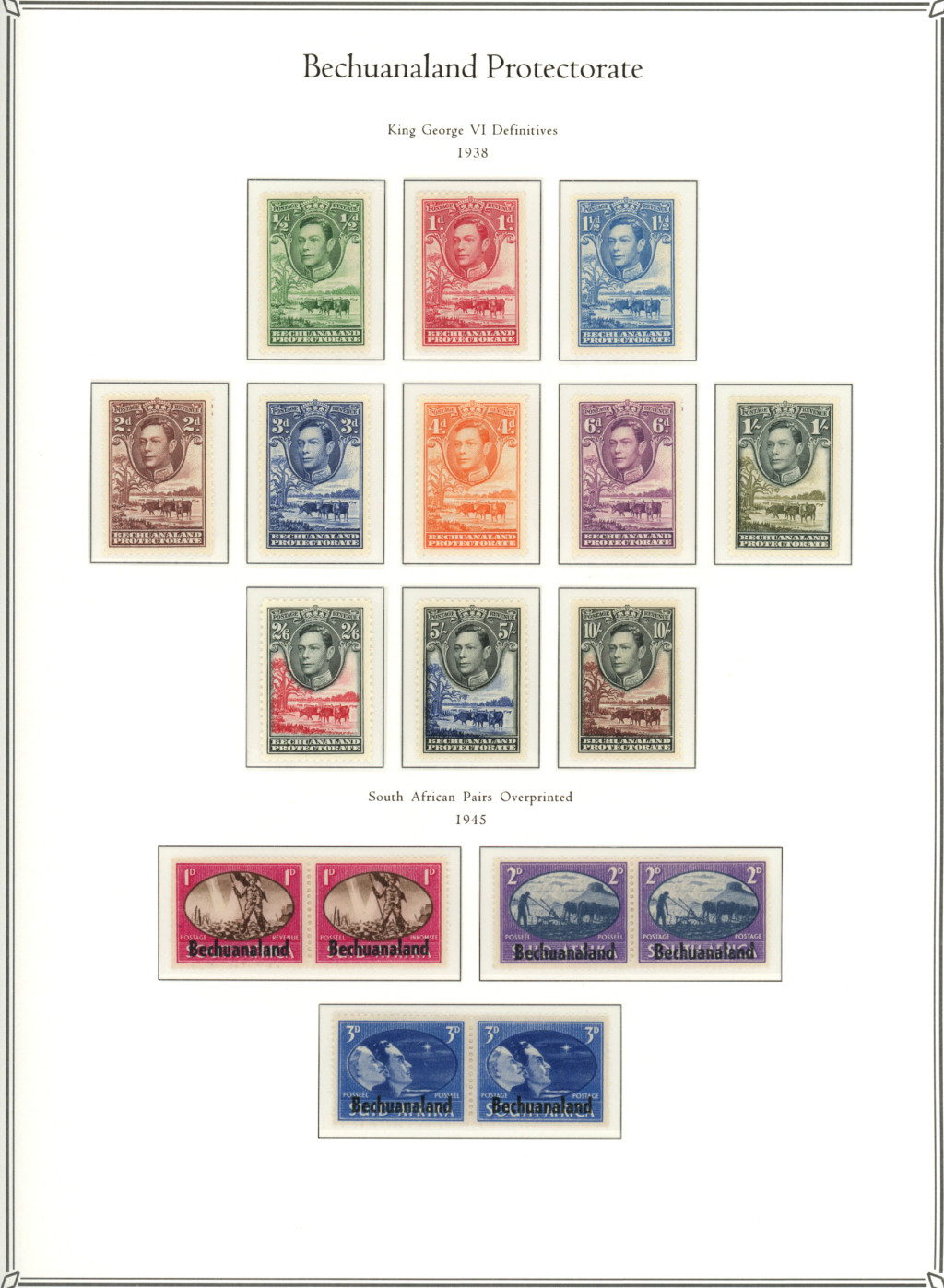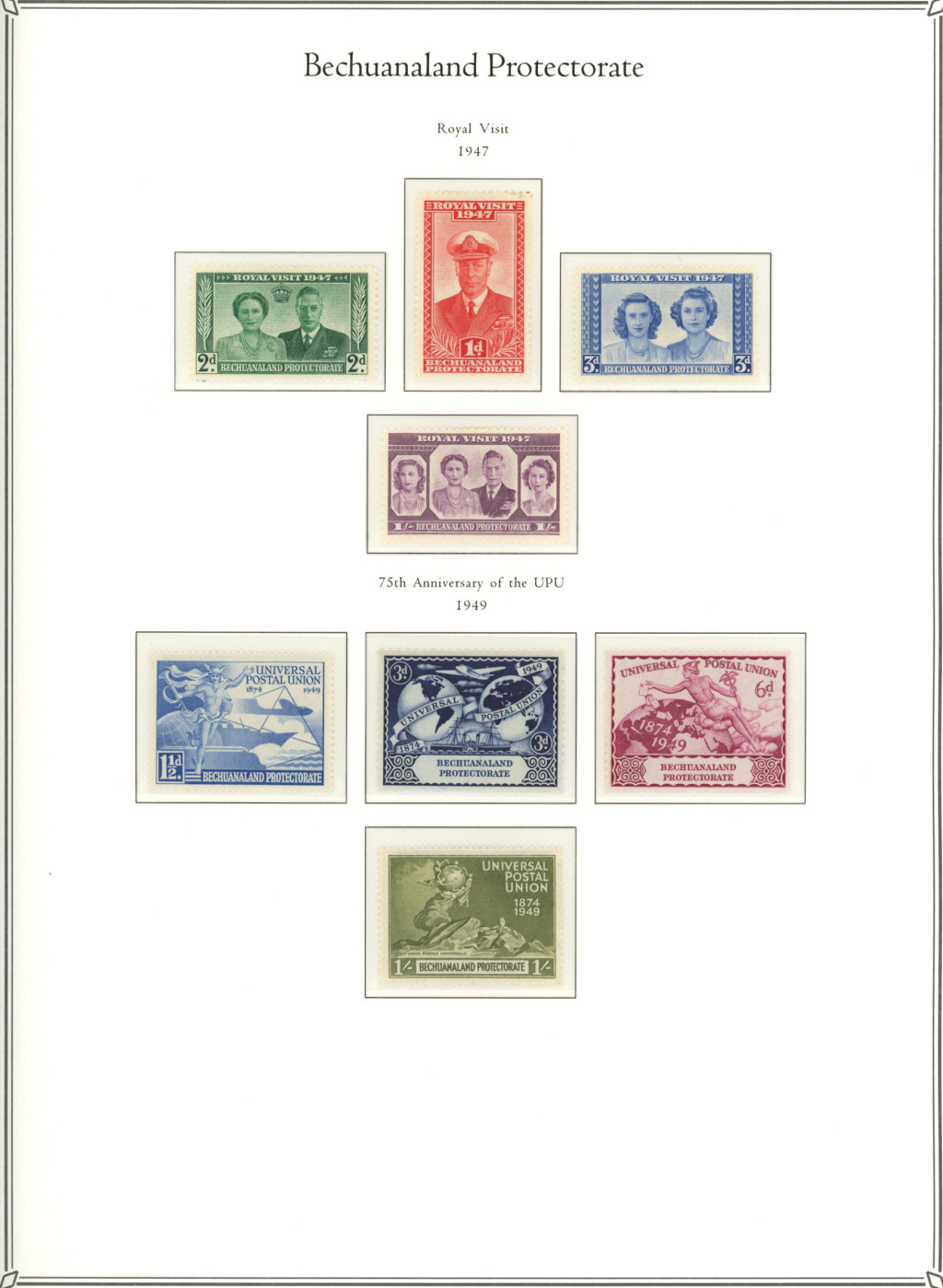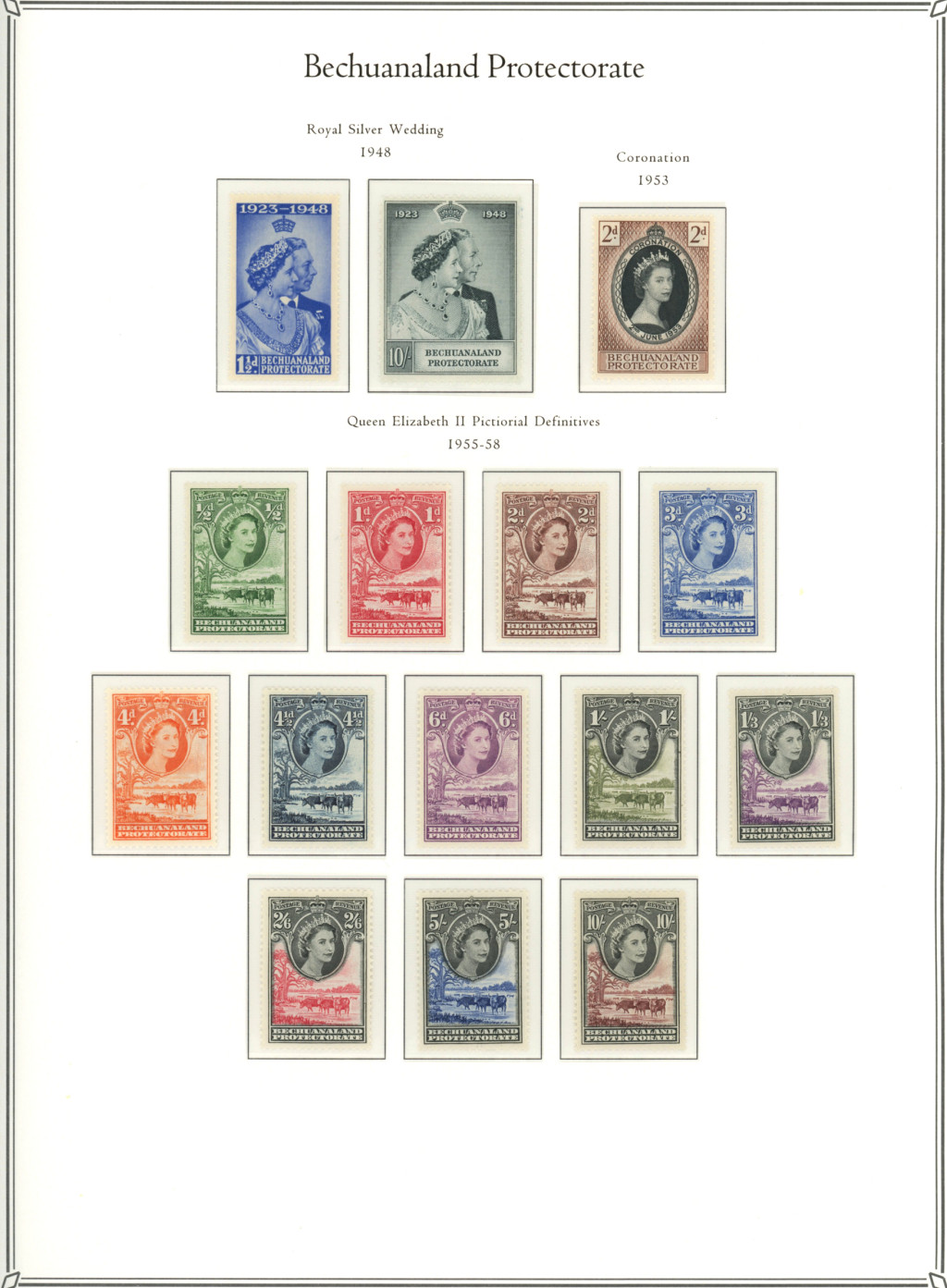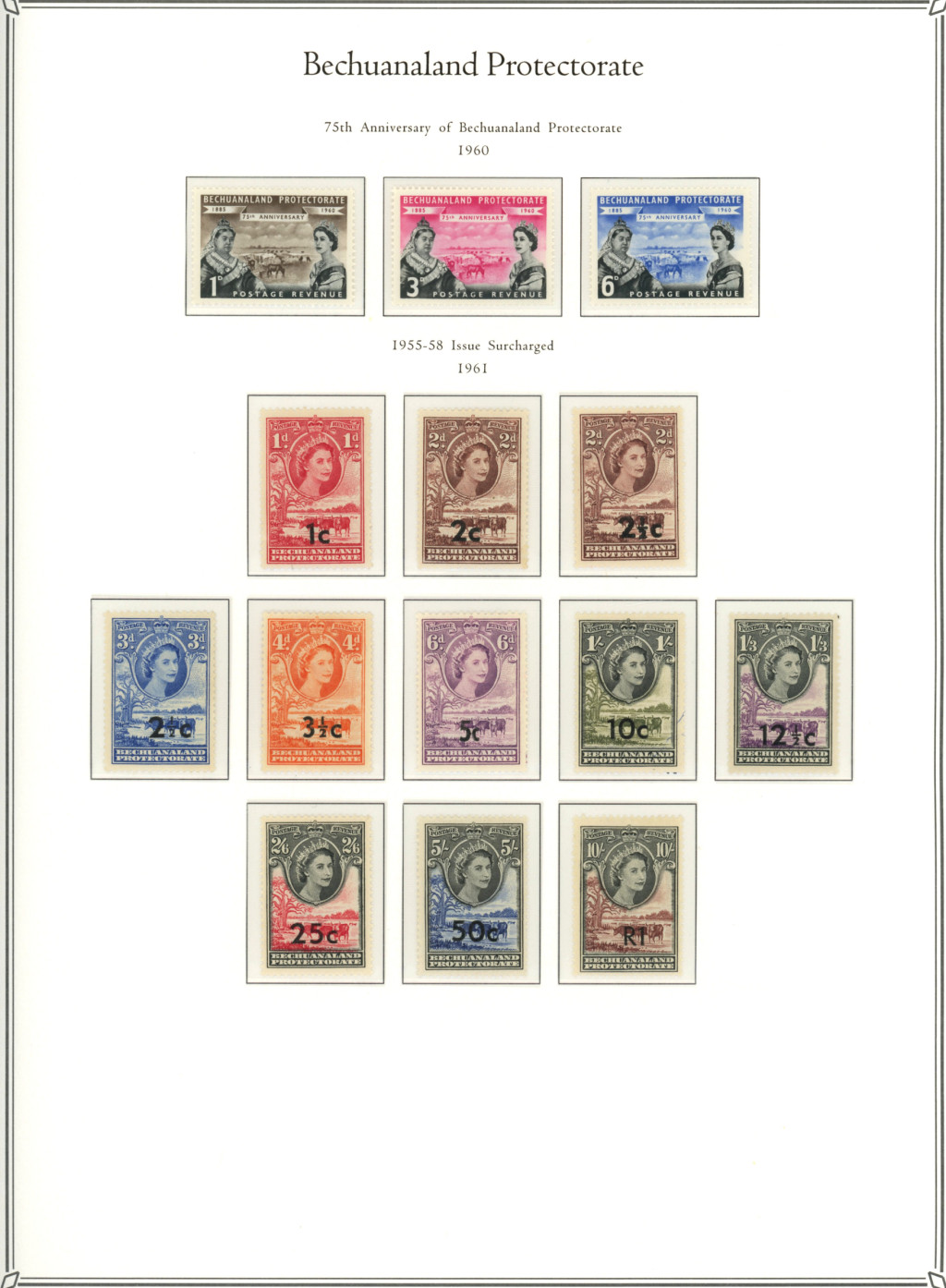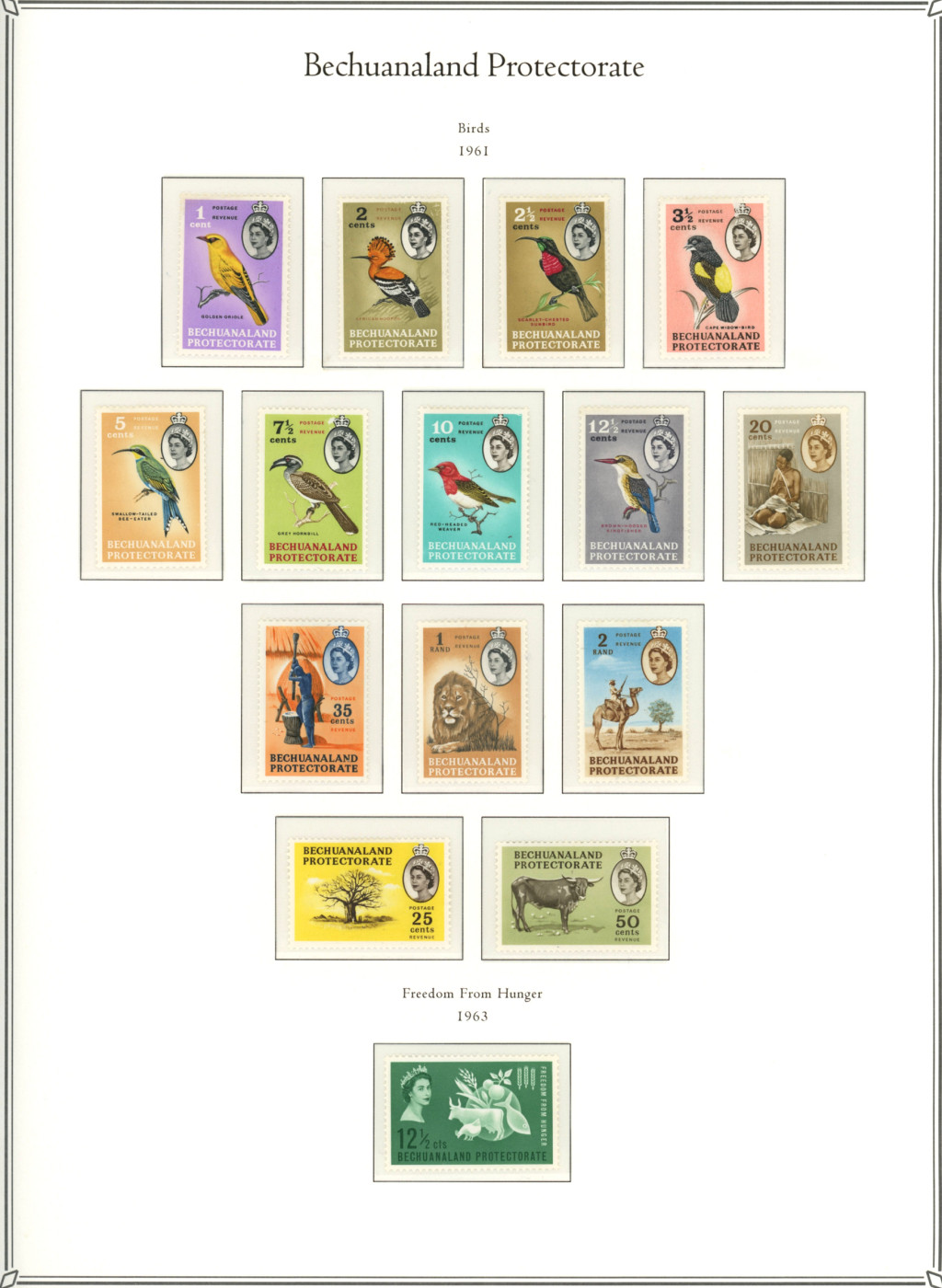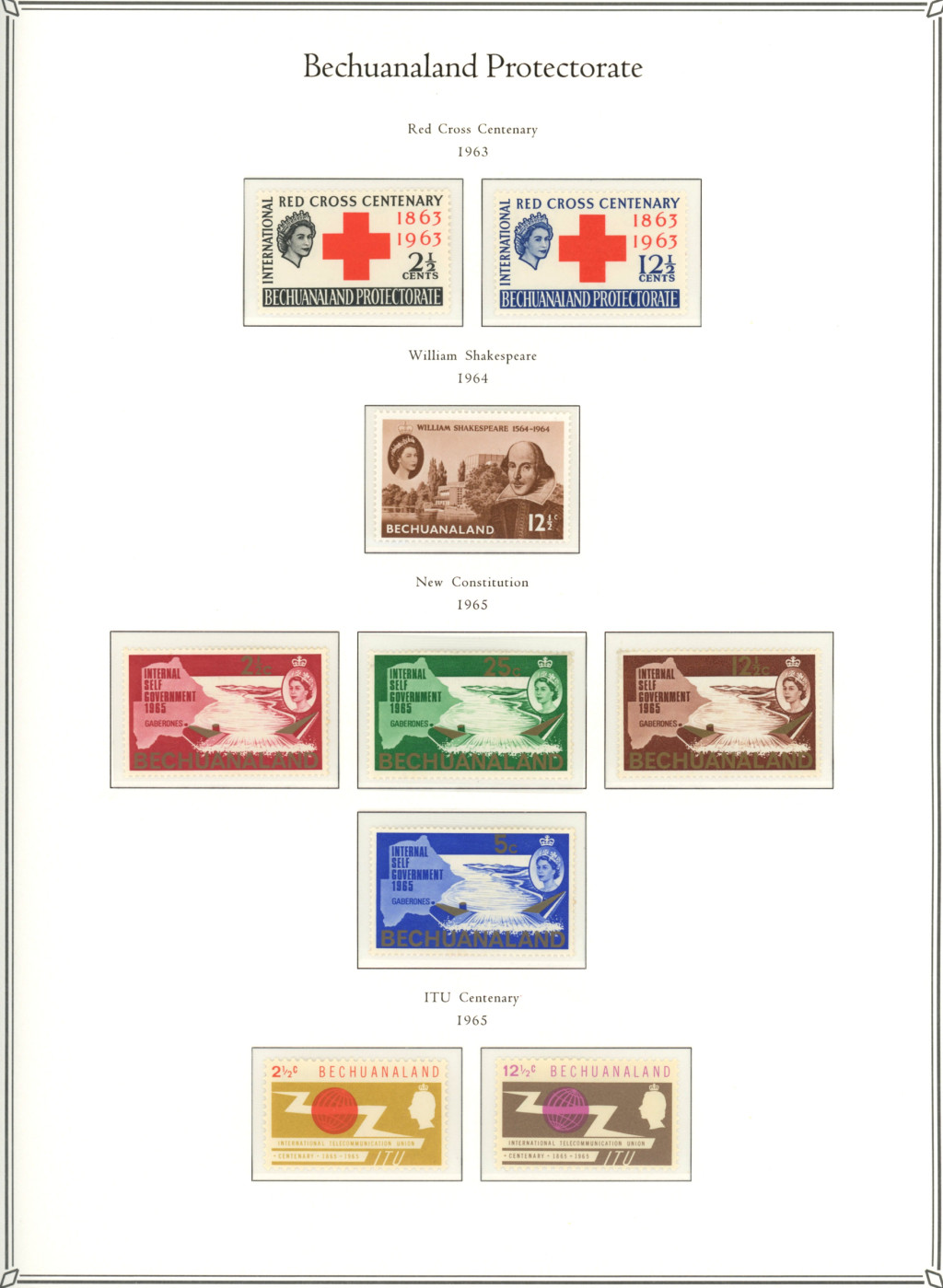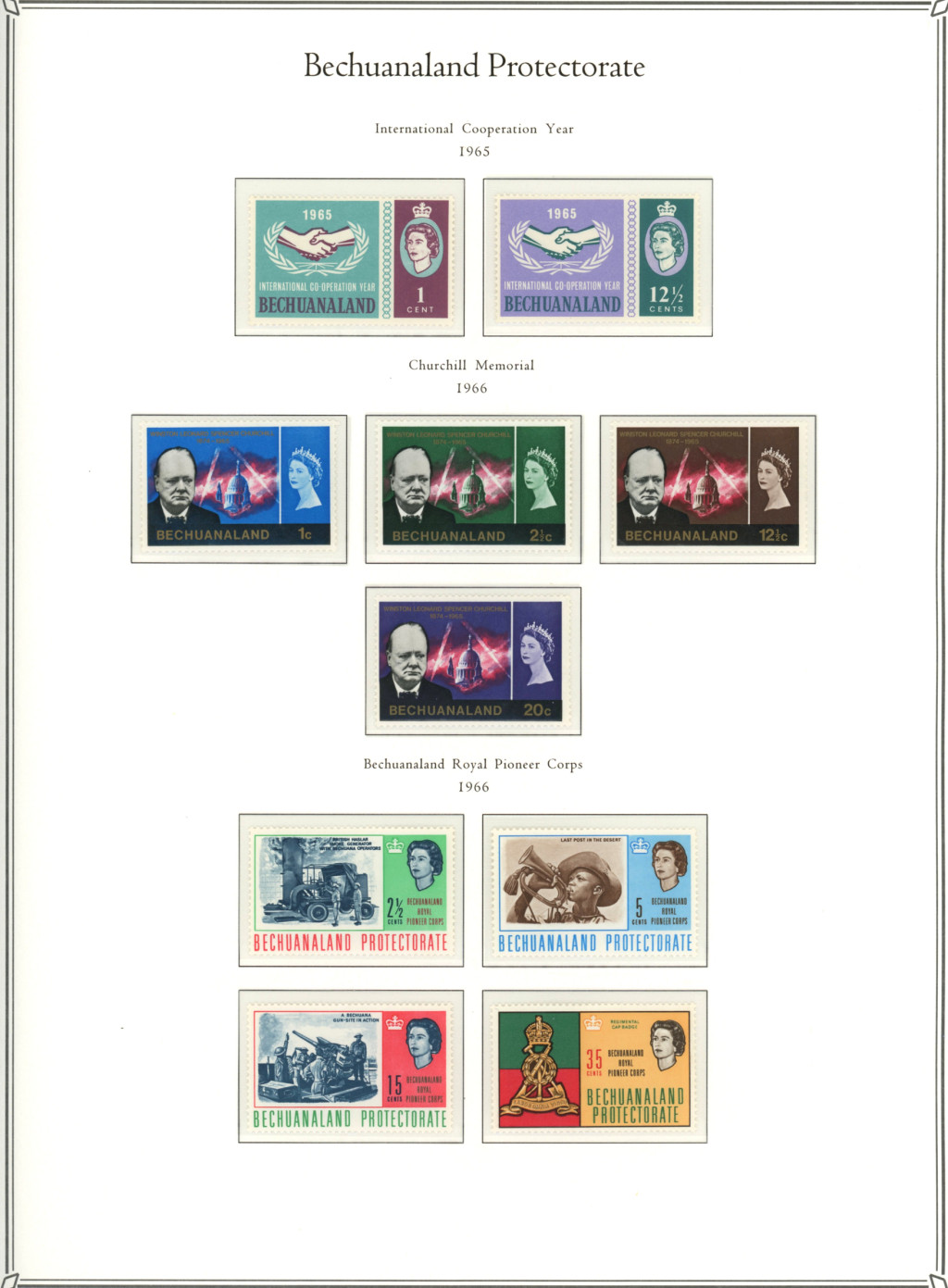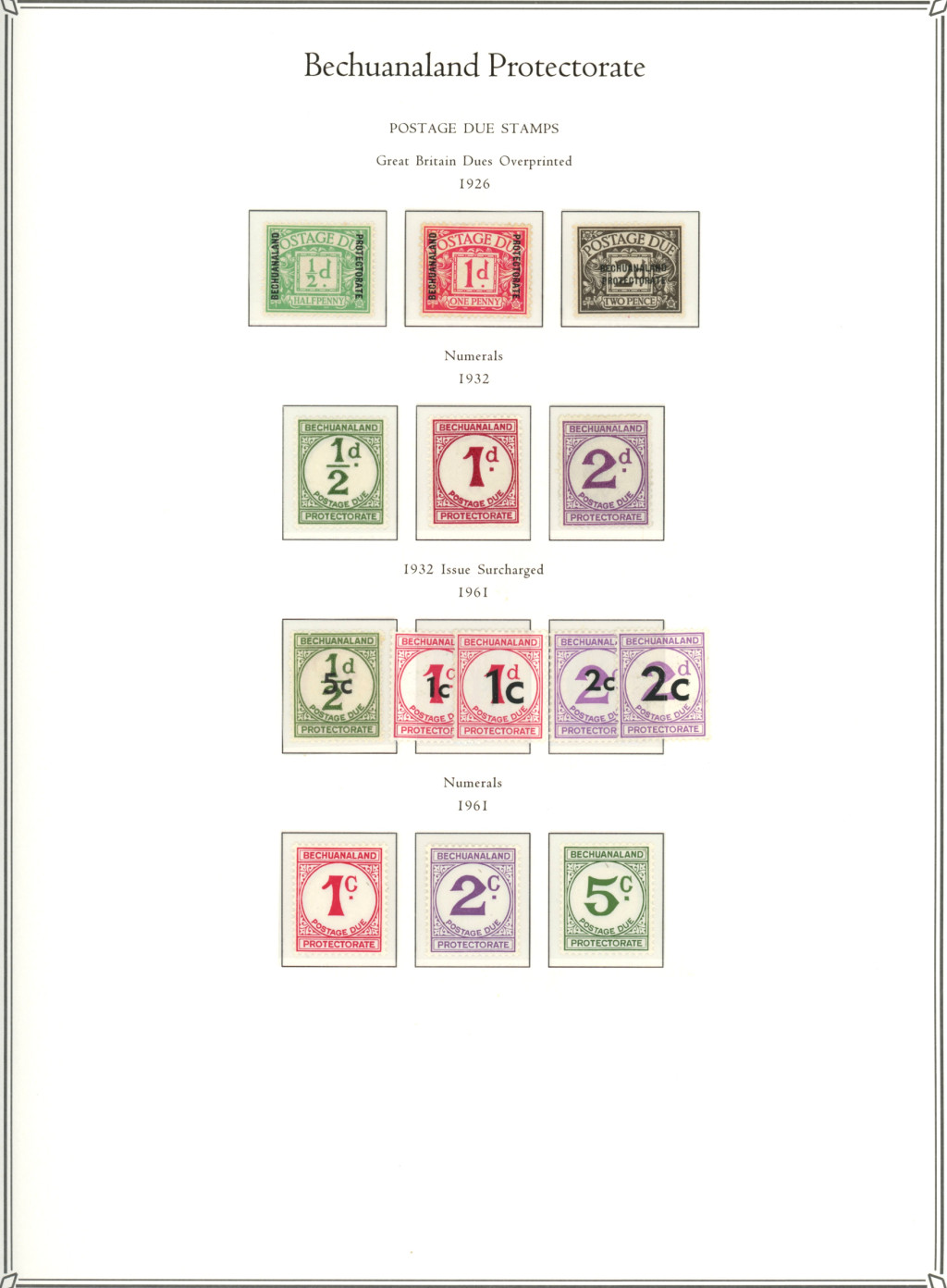The Stamps of the Bechuanaland Protectorate
Oct 30, 2021 21:11:41 GMT
Philatarium, Ryan, and 11 more like this
Post by REL1948 on Oct 30, 2021 21:11:41 GMT
Stamps of the Bechuanaland Protectorate
The Bechuanaland Protectorate was established on 31 March 1885, by the United Kingdom of Great Britain and Ireland in Southern Africa. It became the Republic of Botswana on 30 September 1966.Scottish missionary John Mackenzie (1835–1899) "believed that the BamaNgwato and other African peoples with whom he worked were being threatened by Boer freebooters encroaching on their territory from the south". He campaigned for the establishment of what became the Bechuanaland Protectorate, to be ruled directly from Britain.
In January 1885 the British cabinet (influenced by Mackenzie) decided to send a military expedition to South Africa to assert British sovereignty over the contested territory. Sir Charles Warren (1840–1927) led a force of 4,000 imperial troops north from Cape Town. After making treaties with several African chiefs, Warren announced the establishment of the protectorate in March 1885.
Bechuanaland meant the country of the Tswana and for administrative purposes was divided into two political entities. The northern part was administered as the Bechuanaland Protectorate and the southern part was administered as the crown colony of British Bechuanaland.
British Bechuanaland was incorporated into the Cape Colony in 1895 and now forms part of South Africa.
The northern part, the Bechuanaland Protectorate, had an area of 225,000 square miles (580,000 km2), and a population of 120,776. It comprised an area occupied by the three main Tswana peoples: the Bamangwato, the Bakwena and the Bangwaketse, together with a number of minor tribes. Also living in the Protectorate were the descendants of the original inhabitants of the area, such as Bushmen and Makalaka, who had been dispossessed by the Tswana peoples in the course of their southern migrations.
The British government originally expected to turn over the administration of the protectorate to Rhodesia or South Africa, but Tswana opposition left the protectorate under British rule until its independence in 1966.
The Bechuanaland Protectorate was technically a protectorate rather than a colony. Originally the local Tswana rulers were left in power, and British administration was limited to the police force to protect Bechuanaland's borders against other European colonial ventures. But on 9 May 1891 the British Government gave the administration of the protectorate to the High Commissioner for South Africa, who started to appoint officials in Bechuanaland, and the de facto independence of Bechuanaland ended.
The protectorate was administered from Mafeking, creating an unusual situation with the capital of the territory being located outside of the actual territory. The area of Mafeking was referred to as 'The Imperial Reserve'.
From Wikipedia, the free encyclopedia
For further reading, I can personally recommend "The Cambridge History of the British Empire. Volume VIII: South Africa, Rhodesia, and the Protectorates" (1937, 549 pages).
Rob
